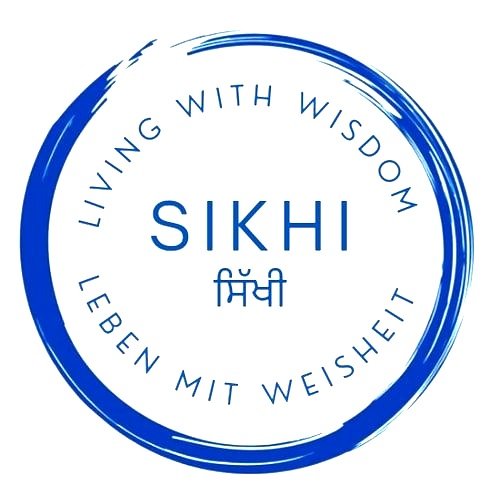Wise people: Forever young - ਗੁਰਮੁਖਿ ਬੁਢੇ ਕਦੇ ਨਾਹੀ
Those who learn stay young - Those who rest, rust
Lifelong wisdom-oriented learning is at the heart of Sikhi, the journey of spiritual students. This path is about continuous spiritual growth, healing and regaining complete inner unity. To achieve this, it is necessary to become aware of our humble role as spiritual guests in the diaspora of impermanence and to acknowledge the body as a precious gift that enables us to have a wide range of experiences.
Core message of the verses about staying young: Gurmukhe Budhe Kade Nahi
The following insights of Gurmat, timeless spiritual wisdom that has been handed down in writing (Gurbani) and lies at the heart of Sikhi, were revealed through the Enlightened One Gur Amar Das (1479- 1574) and are translated line by line in the final section. As with any translation of Gurbani, it is a challenging art to come close to the poetic and metaphorical beauty of the original verses.
The inner child and mental decolonization: Unlearning and learning
In Gurmat, being young symbolizes openness to mental decolonization. This refers to the humble willingness to unlearn everything that flows into us from the outside and shapes us in such a way that we become alienated from our spiritual nature. This includes, for example, linear growth thinking. Those who are able to remain young at heart are those who, regardless of their biological age, retain their inner child of purity and who listen attentively and are willing to learn. This is especially true, when they are exposed to wisdom-oriented insights that initially seem strange or even trigger inner resistance and question childhood imprints and beliefs. This includes identification with human-made dogmas, beliefs, codes of conduct, rituals, political parties, national, ethnic or religious groups, brands and trends.
Gurmukh: Wise and intuitively in connection with children
Wise people stay young inside. They are called Gurmukh or Gursikh, among others. They intuitively have a playful, loving and potential-oriented connection with children. Because, like children, they themselves are in a state of lightness, attentiveness, learning and creativity, regardless of external circumstances. They maintain their original purity and act out of the moment and their entire being rather than strategically. Wise people are full of foresight and bring every possible virtue to life in everyday life. They are aware that virtues and unifying values never belong to a particular group or religion, but simply carry the copyright of divinity. They realize that an awakened life goes beyond rituals, appearance, material comforts, routines and easy answers and entails an ongoing inner and ethical alignment with the higher wisdom of life. Accordingly, the young at heart are receptive to the higher wisdom of life, also called the voice of the Divine (Sabad, Bani, Nad, Gur Ka Phnana).
Manmukh: Driven by egoism and transient phenomena
Those who are driven by their intellect, emotions and external identifications are called Manmukh. They have become alienated from their spiritual self. They are attached to ephemeral phenomena and identify with fleeting emotions, desires, competitive zeal, worldly prosperity, human-made categories like nation states, orthodoxies, intellectual theories and paradigms and dogmas till old age. Manmukh also strive for a long biological life and see death as a technical problem that needs to be eliminated. To this end, they accept transhumanist approaches and the use of risky drugs and experiments.
Lifelong learning has transgenerational impacts
Staying young does not mean that the body does not age. It is a law of nature that everything that is born ages. Being young symbolizes the continual readiness for spiritual evolution, even in old biological age. This life-affirming attitude not only has a beneficial health effect on our psyche and body, but also on society. Because the healthier the individual, the healthier the collective.
Lifelong learning also has a positive intergenerational influence. Where the focus is on the wisdom of what is said and not on the speakers or even their origin or age, young and old people can learn from each other in a mutually respectful way and grow closer together. Gur Har Rai (1630-1661), Gur Har Krishan (1656-1664) and Gur Gobind Singh (1666-1708) are impressive embodiments of this intergenerational ideal. They were so wise, virtuous and charismatic at a young age that they possessed a natural authority. They were true Gurmukh, spiritually fully awakened human beings who united all generations from different socio-cultural backgrounds through timeless spiritual wisdom.
Consciously learning what is right
The art of learning what is right is essential for an awakened life. True students consciously learn to internalize what is right. In Gurmat, right and good (khara, pun) is considered to be everything that brings about holistic and long-term bliss, fulfillment, unity and healing. Whatever causes long-term harm to people, animals and the environment, sows division, brings discord or destruction, is regarded as wrong and bad (khota, pap).
Awakened students know what nourishes their soul in the long term and keeps them mentally and physically healthy without causing unnecessary harm to other people, animals and nature. However, those who pursue businesses, activities and hobbies such as golfing, skiing or motor racing without reflecting on their harmful side-effects on nature through excessive water consumption, deforestation and air pollution, live unconsciously and not in harmony with their spiritual self and Mother Earth. In this linear existence with extremes according to the motto “ever more, ever further and ever higher”, there is still a long way to go towards a humble, cyclical and grounded way of life.
The art of a fulfilled and equanimous life
The holistic path of Sikhi encourages us to live a life of introspection using the spiritual wisdom inherent in all of us to nourish and uplift us. When we master the art of introspection and contemplation, we can become truly wise human beings. Then we are able to live a conscious life in harmony with our divine self and the higher wisdom of life. Similar to archery, which requires concentration, balance and the ability to let go at the right moment, introspection centers us. With its help, we can lead an awakened life at any age that is imbued with joy and intuitive equanimity. Pain and joy are then equally accepted, as attachment and identification with transient phenomena have been left behind.
Line by line translation
ਗੁਰਮੁਖਿ ਬੁਢੇ ਕਦੇ ਨਾਹੀ ਜਿਨੑਾ ਅੰਤਰਿ ਸੁਰਤਿ ਗਿਆਨੁ ॥
The wise and spiritual (Gurmukh) never age as they consciously live in harmony with their inherent spiritual wisdom.
ਸਦਾ ਸਦਾ ਹਰਿ ਗੁਣ ਰਵਹਿ ਅੰਤਰਿ ਸਹਜ ਧਿਆਨੁ ॥
They continuously live the virtues of the Divine (Har) and are intuitively in tune with their inner center.
ਓਇ ਸਦਾ ਅਨੰਦਿ ਬਿਬੇਕ ਰਹਹਿ ਦੁਖਿ ਸੁਖਿ ਏਕ ਸਮਾਨਿ ॥
They always remain in a state of bliss and awareness, regarding pain and pleasure with equanimity.
ਤਿਨਾ ਨਦਰੀ ਇਕੋ ਆਇਆ ਸਭੁ ਆਤਮ ਰਾਮੁ ਪਛਾਨੁ ॥੪੪॥
Those whose vision is guided by oneness realize the essence of the Divine (Ram) in everything.
ਮਨਮੁਖੁ ਬਾਲਕੁ ਬਿਰਧਿ ਸਮਾਨਿ ਹੈ ਜਿਨੑਾ ਅੰਤਰਿ ਹਰਿ ਸੁਰਤਿ ਨਾਹੀ ॥
Mind-driven people (Manmukh) remain immature; even in old age they lack awareness of the Divine within.
ਵਿਚਿ ਹਉਮੈ ਕਰਮ ਕਮਾਵਦੇ ਸਭ ਧਰਮ ਰਾਇ ਕੈ ਜਾਂਹੀ ॥
Engrossed in ego, they regret their actions before their inner judge of righteousness (Dharam Rae).
ਗੁਰਮੁਖਿ ਹਛੇ ਨਿਰਮਲੇ ਗੁਰ ਕੈ ਸਬਦਿ ਸੁਭਾਇ ॥
Gurmukh are pure, without impurity, and attuned to the inner divine voice (Sabad).
ਓਨਾ ਮੈਲੁ ਪਤੰਗੁ ਨ ਲਗਈ ਜਿ ਚਲਨਿ ਸਤਿਗੁਰ ਭਾਇ ॥
Polllution does not cling to them anywhere as long as they walk in harmony with true spiritual wisdom.
ਮਨਮੁਖ ਜੂਠਿ ਨ ਉਤਰੈ ਜੇ ਸਉ ਧੋਵਣ ਪਾਇ ॥
The impurity of the Manmukh cannot be washed off even if they perform hundreds of external purification practices.
ਨਾਨਕ ਗੁਰਮੁਖਿ ਮੇਲਿਅਨੁ ਗੁਰ ਕੈ ਅੰਕਿ ਸਮਾਇ ॥੪ੵ॥
Nanak, the Gurmukh are united and merge with divine wisdom.
Guru Granth Sahib (GGS), 1418, M.3

